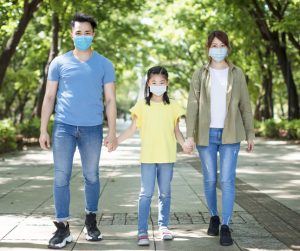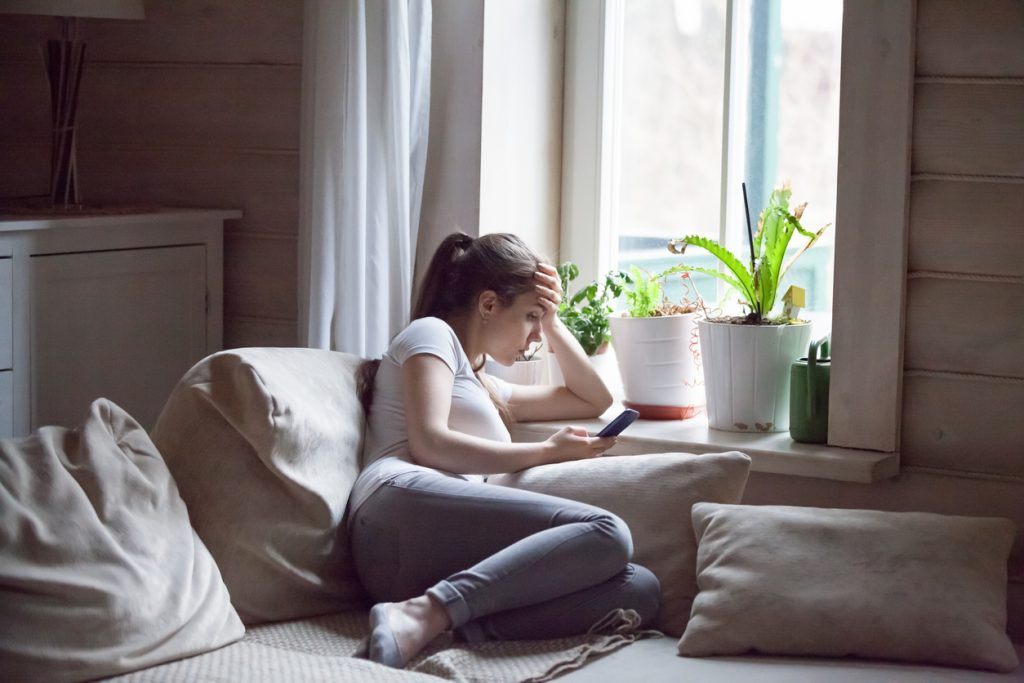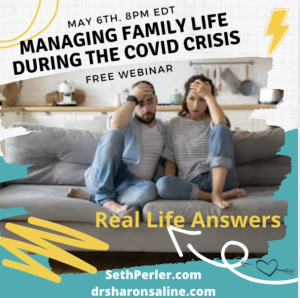 People who are very engaged in social media must use caution to ensure that they don’t place more value on their virtual friends, or how many or few they have, versus their in-person relationships. We can all get distracted by the online world, believing that things are happening without us (FOMO: Fear of Missing Out) or feeling pressure to respond to posts immediately. This focus means that we may well struggle with interpersonal conversations, especially about difficult subjects, in real time, face-to-face with true friends. I recommend to all my clients, especially those with ADHD who can struggle socially, that sending messages or ‘talking’ online, where you don’t often see another person’s reaction, can possibly make you misinterpret their intentions. In relationship, we have to learn through interpersonal communication and time spent together in the same space to read each other’s emotional weather report and respond appropriately. When people spend more time engaged with each other rather than their screens, they perceive and understand social nuances and learn how to deal with positive and negative feelings with empathy and consideration. This enriches relationships and deepens connections. Read more:
People who are very engaged in social media must use caution to ensure that they don’t place more value on their virtual friends, or how many or few they have, versus their in-person relationships. We can all get distracted by the online world, believing that things are happening without us (FOMO: Fear of Missing Out) or feeling pressure to respond to posts immediately. This focus means that we may well struggle with interpersonal conversations, especially about difficult subjects, in real time, face-to-face with true friends. I recommend to all my clients, especially those with ADHD who can struggle socially, that sending messages or ‘talking’ online, where you don’t often see another person’s reaction, can possibly make you misinterpret their intentions. In relationship, we have to learn through interpersonal communication and time spent together in the same space to read each other’s emotional weather report and respond appropriately. When people spend more time engaged with each other rather than their screens, they perceive and understand social nuances and learn how to deal with positive and negative feelings with empathy and consideration. This enriches relationships and deepens connections. Read more:
ADHD and Screen Sanity: Why a digital break is good for everybody right now
 During this pandemic, we all are experiencing heightened anxiety and there is so much we can’t control. What we eat is luckily something we can control now. Some foods are good for our physical, emotional well-being, and some are not.
During this pandemic, we all are experiencing heightened anxiety and there is so much we can’t control. What we eat is luckily something we can control now. Some foods are good for our physical, emotional well-being, and some are not.

 Teens experience a few types of academic burnout depending on their individual situations. For neurotypical kids, academic burnout usually arises towards the end of the semester when they are burdened with final tests, projects and paper in addition to their other commitments such as sports, music or theater or work. For high-achieving kids who are taking AP classes, preparing for AP tests can add to their stress. For juniors in high school who additionally have to take the SAT’s or ACT’s for college, it can be overwhelming. They can become exhausted with how much they have to do.
Teens experience a few types of academic burnout depending on their individual situations. For neurotypical kids, academic burnout usually arises towards the end of the semester when they are burdened with final tests, projects and paper in addition to their other commitments such as sports, music or theater or work. For high-achieving kids who are taking AP classes, preparing for AP tests can add to their stress. For juniors in high school who additionally have to take the SAT’s or ACT’s for college, it can be overwhelming. They can become exhausted with how much they have to do. Stress and anxiety are connected but also different. Stress is related to feeling overwhelmed and incapable of managing the things that you have to do. Productive stress motivates you to get stuff done; poisonous stress contributes to worry and anxiety. You can’t get things accomplished to feel a sense of satisfaction. Stress can also be related to life circumstances such as poverty, illness and racism that cause you distress but have not clear resolution in sight.
Stress and anxiety are connected but also different. Stress is related to feeling overwhelmed and incapable of managing the things that you have to do. Productive stress motivates you to get stuff done; poisonous stress contributes to worry and anxiety. You can’t get things accomplished to feel a sense of satisfaction. Stress can also be related to life circumstances such as poverty, illness and racism that cause you distress but have not clear resolution in sight. When young adults have lived independently, they are accustomed to making their own schedules and sleeping, eating, studying and socializing according to their own rhythm. In general, they’re not that interested in free advice about what they could be doing better or differently. Instead, they want to be respected for the autonomy that they’ve developed and be seen in their developing maturity.
When young adults have lived independently, they are accustomed to making their own schedules and sleeping, eating, studying and socializing according to their own rhythm. In general, they’re not that interested in free advice about what they could be doing better or differently. Instead, they want to be respected for the autonomy that they’ve developed and be seen in their developing maturity. FREE WEBINAR with Seth Perler and Dr. Sharon Saline May 6, 2020 8 pm EST Burned out on COVID-19?! We get it. Who would’ve thought that the world would change so dramatically? Schedules? What schedules? Kids are staying up late, sleeping to all hours, chores have gone by the wayside, parents are snippy with each other and the kids, and visa versa. Even the dog is unsure of what’s going on!
FREE WEBINAR with Seth Perler and Dr. Sharon Saline May 6, 2020 8 pm EST Burned out on COVID-19?! We get it. Who would’ve thought that the world would change so dramatically? Schedules? What schedules? Kids are staying up late, sleeping to all hours, chores have gone by the wayside, parents are snippy with each other and the kids, and visa versa. Even the dog is unsure of what’s going on!  Q: What is situational anxiety? A: Situational anxiety occurs when someone is worried about certain environments or events and what will happen in these contexts. When people suffer from situational anxiety, they feel frightened by and unclear about how to manage the circumstances that concern them. Sometimes they may exaggerate perceived negative outcomes as well. Q: What are some of the most common fears, anxious thoughts individuals are having in response
Q: What is situational anxiety? A: Situational anxiety occurs when someone is worried about certain environments or events and what will happen in these contexts. When people suffer from situational anxiety, they feel frightened by and unclear about how to manage the circumstances that concern them. Sometimes they may exaggerate perceived negative outcomes as well. Q: What are some of the most common fears, anxious thoughts individuals are having in response